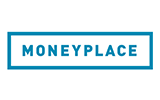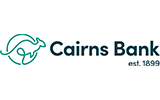What are medical loans?
A medical loan is a personal loan that helps cover the cost of medical treatment, such as surgery. A lot of lenders advertise medical loans as a separate product, but what they’re offering is generally the same as any other kind of personal loan.
You see, personal loans can be used for more or less any purpose.
This means they can be used for medical procedures - covering clinical and administrative costs.
How do medical loans work?
Here’s how a medical loan in Australia typically works:
- Borrow between $2,000 and $100,000 (the maximum varies by lender)
- Repay it over a term of between 1 and 7 years
- Make weekly, fortnightly or monthly repayments
- Your interest rate could be fixed or variable
- Loans are usually unsecured but there may be secured options
- Your interest rate will depend on your financial situation
Why do people take out medical loans?
By international standards, Australia has an advanced public health system. And private health insurance is there to fill in a lot of the gaps.
But people can still end up with large medical bills. This is why medical loans are available.
Here are five common reasons why Australians use medical loans:
1. The procedure isn’t covered by Medicare
If the procedure you're having isn't covered by Medicare (and you’re also not covered by private health insurance), a medical loan could help finance it.
For example, Medicare generally does not cover:
- Private hospital costs
- Elective cosmetic procedures
- Laser eye surgery
- Select medications
- Some types of home care
2. Private health insurance won’t cover the cost
This could simply be because you don’t have private health insurance, or your policy doesn’t cover a particular treatment. Even a very high level of private health insurance will have its limits.
3. You’re having the procedure done overseas
Medicare and private health insurance generally won’t cover you if you choose to travel overseas to have the procedure.
4. You don’t want to wait for the public system
What if the procedure you need is covered in the public system but there’s a long waiting list. Taking out a medical loan and paying for private medical care could be an alternative.
5. There are large related costs to cover
The medical cost itself is just one aspect of funding a medical procedure. A medical loan could cover that plus the related costs, like travel, lost income and aftercare costs.
What can you use a medical loan for?
- Cosmetic surgery
- Other elective surgery
- Dental work
- Laser eye surgery
- Specialist appointments
- IVF
- Medication
- Rehabilitation costs
- Medical equipment
- Travel costs
- Private hospital accommodation
How to choose the best medical loan
While your priority will be getting the best medical treatment, it’s also worth finding a medical loan that offers good value, as it'll make the financing process simpler and more affordable.
Here’s what you should look at:
Loan purpose
It’s worth confirming up front whether the lenders place any restrictions on what you can use your medical loan for.
Borrowing amount
Likewise, make sure the lenders you’re considering offer loans of the right size for what you need.
Interest rates
This will be the biggest cost of the finance. Try to get the lowest interest rate you’re eligible for. Your interest will depend on various factors like your credit score, the loan amount, loan term and your overall financial position.
Loan term
Ideally look for a short repayment term. This will keep your interest costs down. The average personal loan term is just under three years.
Repayments
Based on the loan amount, interest rate and loan term, you’ll be able to calculate your regular loan repayments. Can you afford these comfortably? Use our personal loan calculator to find out.
Early repayment
Another way to reduce costs is making extra repayments on your medical loan if you can afford to. Look for loans that allow you to do this without penalty and don’t charge a fee if you repay the loan in full early. This can also make life easier if you want to refinance the personal loan down the track.
Fees
Like most loans, medical loans also come with fees to be aware of (that will add to the cost of your loan). A comparison rate that's higher than the interest rate indicates that fees apply, so make sure you're across what these are.
Low rate medical loans
| Loan | Interest rates from | Comparison rates from^ | Loan amounts |
|---|---|---|---|
| Harmoney Personal Loan | 5.76% | 5.76% | $2,000 - $100,000 |
| Horizon Bank Personal Loans Secured by Deposits | 5.79% | 6.00% | $500 - $100,000 |
| Horizon Bank Personal Loans Secured by Mortgage | 5.79% | 7.84% | $500 - $100,000 |
| OurMoneyMarket Unsecured Personal Loan | 5.95% | 5.95% | $5,000 - $75,000 |
| NOW Finance Unsecured Personal Loan | 5.95% | 5.95% | $5,000 - $50,000 |
| MoneyMe Personal Loan | 5.99% | 6.70% | $5,000 - $70,000 |
| Revolut Personal Loan | 6.17% | 6.17% | $5,000 - $50,000 |
| Plenti Personal Loan | 6.17% | 6.17% | $5,000 - $65,000 |
| ING Personal Loan | 6.19% | 7.03% | $5,000 - $60,000 |
| MoneyPlace Medical Loan | 6.30% | 6.30% | Up to $80,000 |
Make an informed decision when seeking a medical loan

Shaun McGowan, Loans Expert
“Medical loans in Australia provide crucial financial support for healthcare expenses, but understanding the terms and repayment obligations is important. Ensure you're well-informed about interest rates, repayment schedules, potential fees and the overall cost of the loan to make the most informed decision for your health and financial wellbeing.”
Shaun McGowan, Loans Expert
5 medical loan fees to look out for
- Upfront costs: Loan establishment fees, also called application fees, usually range from $100 to $500. Some lenders may also charge a risk fee for certain borrowers.
- Ongoing fees: Annual and monthly fees, which add up over the loan term (e.g. $15/month = $540 over three years).
- Extra repayment fees: Charged if you make extra repayments to reduce the loan balance and interest charged.
- Early repayment fee: Some lenders charge this if you completely repay the loan before the end of the scheduled term.
- Late payment fees: Charged if you miss a payment. Expect a fee of $10-$25 for each late payment.
Are you eligible for a medical loan?
Qualifying for a medical loan is generally less about what the loan is being used for and more about who you are.
Typically you must be:
- Over the age of 18
- An Australian citizen, or permanent resident, or an eligible visa holder
- Employed or have a regular source of income
Although these are the basic requirements, each lender will have its own way of assessing personal loan applications.
This boils down to establishing whether you are going to be able to repay the medical loan comfortably for the full term.
To do this lenders generally look at factors including:
- Your credit history and credit score (You can check your credit score first to ensure you’re in a good position to be approved)
- Your income
- Your employment status (full time, self-employed etc.)
- Your regular expenses
- Your other debts (e.g credit card limits)
- How many dependents you have
Lenders typically also use these factors to determine your interest rate. Essentially, the more risk a lender sees in your application, the higher your rate is likely to be.
Applying for a medical loan in Australia
Okay, so you’ve compared your options. And you’re confident you meet the eligibility criteria. What now?
Here’s what’s usually involved in making an application for a medical loan:
- Complete an application form with your personal and financial details
- Lenders generally also ask about the purpose of the loan to assess if it is suitable
- Provide any supporting document requested (e.g. payslips, bank and credit card statements)
- Wait for your loan application to be assessed (this can also happen very quickly)
- If approved, sign a loan contract
- The loan funds will be transferred to your nominated bank account
It may be possible to have a medical loan approved with the funds in your bank account in 1-2 business days.
For more complicated applications, like bad credit personal loans or low doc personal loans for self-employed borrowers the process will likely take a bit longer.
Ready to compare medical loans?
Get your best offers from multiple lenders. There's no obligation and checking your rates won't impact your credit score.



















